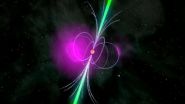(Press-News.org) Until now it was thought that fin whales in the Strait of Gibraltar and the Alboran Sea made up part of the distribution of this species of whale in the Mediterranean. However, an international team of scientists led by a Spaniard has revealed that their population has been overestimated by including specimens from the Atlantic that visit at certain times the western Mediterranean, where the noise generated by human activity affects their survival.
In 1991 the fin whale (Balaenoptera physalus) population in the Mediterranean Sea was estimated at 3500 specimens. A new study, published in Marine Mammal Science, now shows that this record included specimens from the Atlantic, and suggests that the distribution and size of the current population of this whale, which is threatened with extinction, should be reconsidered.
"The Mediterranean population has easily been overestimated, as the census included the whole of the southeast Mediterranean, incorporating Atlantic fin whales within the Mediterranean census", reported to SINC Manuel Castellote, the lead author of the study and researcher in the National Oceanic and Atmospheric Administration (NOOA), Seattle (USA).
The research team analysed 29,822 hours of recordings of the songs emitted by these marine mammals –which can reach a length of 27 metres, and are the second biggest cetaceans in the world– in order to identify the distribution limits of the Mediterranean fin whale and those of the north Atlantic fin whale in the Straits of Gibraltar, where the two populations overlap.
The results reveal that the presence of fin whales in the areas of the Straits of Gibraltar and the Alboran Sea –southwest of the Mediterranean– is exclusively limited to Atlantic fin whales that visit the Mediterranean Sea, above all in autumn and spring.
As a consequence, "the population of Mediterranean fin whales presents a much more limited distribution than currently described, excluding a significant region of the western Mediterranean", confirms Castellote, who highlights the fact that this region had previously been identified as a feeding area.
VIDEO:
Until now it was thought that fin whales in the Strait of Gibraltar and the Alboran Sea made up part of the distribution of this species of whale in the...
Click here for more information.
The importance of the study is the critical state situation of the whale in these waters where it is the only mysticete (it has a baleen instead of teeth). The species is particularly susceptible to collisions with merchant vessels and ferries, which is the main cause of fin whale mortality.
Among other threats, an "insufficient" knowledge of their basic ecological characteristics such as distribution and population size stands out. For the biologist, "from a conservation point of view, it is essential to understand the geographical distribution and population size of the Mediterranean fin whale, because if not, appropriate management methods cannot be implemented".
The danger of undersea noise
Maritime traffic and geophysical exploration –including the search for hydrocarbons– "drastically" reduces the song effectiveness –linked to reproduction and which propagates hundreds of kilometres beneath the Sea– of the whales, which are also the group of marine mammals with the greatest acoustic sensitivity at low frequencies. "The noise generated through human activity in the oceans leads to possible chronic effects on the health of this species", Castellote states.
To control these threats the same researchers identified in another report the possible impact of noise generated by human activity on the acoustic behaviour and geographical movement of the fin whales in various regions of the Mediterranean Sea and in the northeast Atlantic.
After analysing 20,547 hours of recordings of the sounds emitted by the whales, the study published in Biological Conservation indicated that the whales modified the characteristics of their songs in order to try to reduce the impact of noise on their propagation.
In addition the researchers recorded a massive displacement of fin whales, triggered by the noise from geophysical prospecting at a distance of 285 km from the study area. "These recurrent displacements, together with the changes in acoustic behaviour, could increase the energy expenditure and reduce the reproductive success of whales affected by the noise", the expert indicated.
In the long-term the consequences for these mammals are clear: chronic effects which impact on their survival emerge. "Noise in the marine medium, despite being recognised as a significant pollutant, is far from being controlled and regulated within the waters of the Exclusive Economic Zone of Spain", warns Castellote.
INFORMATION:
Image: Fin whale which appeared stranded on the beach in Marbella (Spain) in 2008, the skeleton of which is on display in the National Museum of Natural Sciences (MNCN) in Madrid.
References:
Castellote, Manuel; Clark, Christopher W.; Lammers, Marc O. "Fin whale (Balaenoptera physalus) population identity in the western Mediterranean Sea" Marine Mammal Science 28(2): 325-344 DOI: 10.1111/j.1748-7692.2011.00491. 2012.
Manuel Castellote, Christopher W. Clark, Marc O. Lammers "Acoustic and behavioural changes by fin whales (Balaenoptera physalus) in response to shipping and airgun noise" Biological Conservation 147: 115 doi:10.1016/j.biocon.2011.12.021. 2012
The fin whale, under more threat in the Mediterranean than thought
2012-07-26
ELSE PRESS RELEASES FROM THIS DATE:
Genome analysis of brain tumors showing the way to new treatment strategies
2012-07-26
Brain tumors are the primary cause of cancer mortality in children. Even if a cure is possible, young patients often suffer from the stressful treatment which can be harmful to the developing brain. The most common childhood brain tumors are medulloblastoma and pylocytic astrocytoma.
In order to find new target structures for more gentle treatment methods, cancer researchers are systematically analyzing all changes in the genetic material of such tumors. This is the mission of the PedBrain consortium, which was launched in 2010 as the first German part in the International ...
First photo evidence of snub-nosed monkey species in China
2012-07-26
Chinese researchers have published the first evidence that a population of the recently discovered snub-nosed monkey, Rhinopithecus Strykeri, live in China. Until now researchers have been unable to photograph the monkey, whose upturned nostrils are said to make it sneeze in the rain. The paper is published in the American Journal of Primatology.
The species was first discovered by a team led by Ngwe Lwin from the Myanmar Biodiversity and Nature Conservation Association and described by Dr Thomas Geissman in the American Journal of Primatology in October 2010. It was ...
Study associates excess maternal iodine supplementation with congenital hypothyroidism in newborns
2012-07-26
Cincinnati, OH. July 26, 2012 – Congenital hypothyroidism is thyroid hormone deficiency at birth that, if left untreated, can lead to neurocognitive impairments in infants and children. Although the World Health Organization recommends 200-300 µg of iodine daily during pregnancy for normal fetal thyroid hormone production and neurocognitive development, the US Institute of Medicine considers 1,100 µg to be the safe upper limit for daily ingestion. A case series scheduled for publication in The Journal of Pediatrics describes three infants who developed congenital hypothyroidism ...
Teamwork against Benzene
2012-07-26
This press release is available in German.
Leipzig. The carcinogenic harmful substance benzene can seriously impact the soil and ground water following chemical accidents or at old industrial sites. Nevertheless, bacteria exist which can degrade this compound even in the absence of oxygen. Until now it was not clear which organisms take part in this process and how they work together. With modern analytical procedures scientists of the Helmholtz Centre for Environmental Research (UFZ) have succeeded for the first time in tracking the path of this harmful substance through ...
New stroke treatments becoming a reality
2012-07-26
Scientists led by the President of The University of Manchester have demonstrated a drug which can dramatically limit the amount of brain damage in stroke patients.
Professor Dame Nancy Rothwell, Professor Stuart Allan and their team have spent the last 20 years investigating how to reduce damage to the brain following a stroke.
They have been testing the effectiveness of the drug Anakinra (IL-1Ra), which is already used for rheumatoid arthritis in experimental studies of stroke.
This new study builds on previous research, although the big difference is that rats ...
Switching the state of matter
2012-07-26
Sixty years after the transistor began a technological revolution that transformed nearly every aspect of our daily lives, a new transistor brings innovations that may help to do so again. Developed at RIKEN, the device uses the electrostatic accumulation of electrical charge on the surface of a strongly-correlated material to trigger bulk switching of electronic state. Functional at room temperature and triggered by a potential of only 1 V, the switching mechanism provides a novel building block for ultra low power devices, non-volatile memory and optical switches based ...
A pulsar with a tremendous hiccup
2012-07-26
This press release is available in German.
Pulsars are superlative cosmic beacons. These compact neutron stars rotate about their axes many times per second, emitting radio waves and gamma radiation into space. Using ingenious data analysis methods, researchers from the Max Planck Institutes for Gravitational Physics and for Radio Astronomy, in an international collaboration, dug a very special gamma-ray pulsar out of data from the Fermi Gamma-ray Space Telescope. The pulsar J1838-0537 is radio-quiet, very young, and, during the observation period, experienced the strongest ...
New biomarker for common lung cancer predicts responses to chemotherapy
2012-07-26
Patients with the most common type of lung cancer are notoriously insensitive to chemotherapy drugs, including cisplatin. New findings related to the cellular pathways that regulate responses to cisplatin have now been published by Cell Press on July 26th in the journal Cell Reports. The findings reveal a potential biomarker that can be used to predict how these patients will respond to chemotherapy, as well as the patients' overall prognosis, paving the way for personalized treatment strategies.
Non-small cell lung cancer (NSCLC) is one of the leading causes of cancer-related ...
Methane measurements at low level flight
2012-07-26
A team of scientists from the Alfred Wegener Institute for Polar and Marine Research in the Helmholtz Association (AWI) and the GFZ German Research Centre for Geosciences has just completed an airborne measurement campaign that allowed for the first time to measure large-scale methane emissions from the extensive Arctic permafrost landscapes. The study area extended from Barrow, the northernmost settlement on the American mainland, across the entire North Slope of Alaska, to the Mackenzie Delta in the Northwest Territories of Canada. The airborne measurements (Airborne ...
Unprecedented accuracy in locating brain electrical activity with new device
2012-07-26
Researchers at Aalto University in Finland have developed the world's first device designed for mapping the human brain that combines whole-head magnetoencephalography (MEG) and magnetic resonance imaging (MRI) technology. MEG measures the electrical function and MRI visualizes the structure of the brain. The merging of these two technologies will produce unprecedented accuracy in locating brain electrical activity non-invasively.
We expect that the new technology will improve the accuracy of brain mapping of patients with epilepsy. It may also improve the diagnosis of ...





